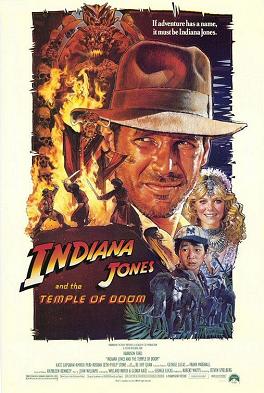
Indiana Jones and the Temple of Doom is a 1984 American action-adventure film directed by Steven Spielberg from a script by Willard Huyck and Gloria Katz, based on a story by George Lucas. It is the second installment in the Indiana Jones film series and a prequel to Raiders of the Lost Ark. The film stars Harrison Ford, who reprises his role as the title character. Kate Capshaw, Amrish Puri, Roshan Seth, Philip Stone, and Ke Huy Quan, in his film debut, star in supporting roles. In the film, after arriving in British India, Indiana Jones is asked by desperate villagers to find a mystical stone and rescue their children from a Thuggee cult practicing child slavery, black magic, and ritual human sacrifice in honor of the goddess Kali.

What Dreams May Come is a 1998 American fantasy drama film directed by Vincent Ward and adapted by Ronald Bass from the 1978 novel by Richard Matheson. Starring Robin Williams, Annabella Sciorra and Cuba Gooding Jr., it won the Academy Award for Best Visual Effects and the Art Directors Guild Award for Excellence in Production Design. It was also nominated for the Academy Award for Best Art Direction. The title is from a line in Hamlet's "To be, or not to be" soliloquy. The film received mixed reviews, with praise for its scenery but criticism for the plot. It was a box-office bomb, grossing only $75.4 million against a budget of $85‒90 million.
Palo, also known as Las Reglas de Congo, is a polytheistic African diasporic religion that developed in Cuba during the late 19th or early 20th century. It draws heavily upon the traditional Kongo religion of Central Africa, with additional influences taken from Catholicism and from Spiritism. An initiatory religion practised by paleros (male) and paleras (female), Palo is organised through small autonomous groups called munanso congo, each led by a tata (father) or yayi (mother).

Mishima: A Life in Four Chapters is a 1985 biographical drama film directed by Paul Schrader from a screenplay he co-wrote with his brother Leonard and Leonard's wife Chieko Schrader. The film is based on the life and work of Japanese writer Yukio Mishima, interweaving episodes from his life with dramatizations of segments from his books The Temple of the Golden Pavilion, Kyoko's House, and Runaway Horses. Francis Ford Coppola and George Lucas were executive producers of the film, which has a musical score composed by Philip Glass and production design by Eiko Ishioka.

Thomas Lee Holland is an American filmmaker. He is best known for his work in the horror film genre, penning the 1983 sequel to the classic Alfred Hitchcock film Psycho, directing and co-writing the first entry in the long-running Child's Play franchise, and writing and directing the cult vampire film Fright Night. He also directed the Stephen King adaptations The Langoliers and Thinner. He is a two-time Saturn Award recipient. Holland made the jump into children’s literature in 2018 when he co-wrote How to Scare a Monster with fellow writer Dustin Warburton.

The Skeleton Key is a 2005 American supernatural folk horror film directed by Iain Softley and starring Kate Hudson, Gena Rowlands, John Hurt, Peter Sarsgaard, and Joy Bryant. The screenplay by Ehren Kruger follows a New Orleans hospice nurse who begins a job at a Terrebonne Parish plantation home, and becomes entangled in a mystery involving the house, its former inhabitants, and Hoodoo rituals that took place there.
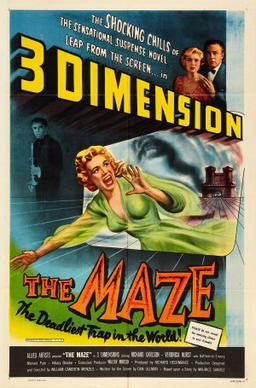
The Maze is a 1953 3-D horror film starring Richard Carlson, Veronica Hurst and Hillary Brooke. It was directed by William Cameron Menzies and distributed by Allied Artists Pictures. It was to be the second 3-D film designed and directed by William Cameron Menzies, known for his very "dimensional" style. It was his final film as production designer and director.
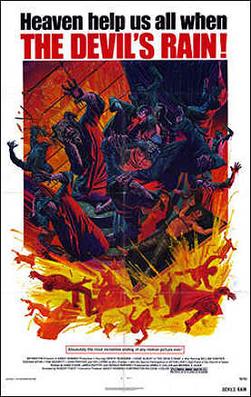
The Devil's Rain is a 1975 American supernatural horror film directed by Robert Fuest and starring Ernest Borgnine, Eddie Albert, William Shatner, Tom Skerritt, Ida Lupino and Keenan Wynn, along with John Travolta in his film debut. Church of Satan founder Anton LaVey is credited as the film's technical advisor and appeared in the film playing a minor role, as does his partner Diane Hegarty.

Motel Hell is a 1980 American comedy horror film directed by Kevin Connor and starring Rory Calhoun, Nancy Parsons, and Nina Axelrod. The plot follows farmer, butcher, motel manager, and meat entrepreneur Vincent Smith, who traps travelers and harvests them for his human sausages.
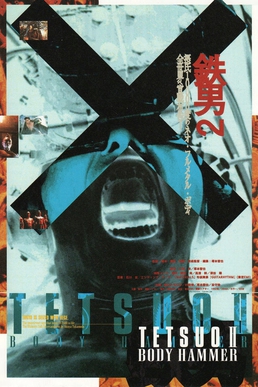
Tetsuo II: Body Hammer is a 1992 Japanese tokusatsu cyberpunk body horror film directed by Shinya Tsukamoto. It is a bigger-budget sequel to Tsukamoto's 1989 film Tetsuo: The Iron Man, utilizing similar themes and ideas as his first film, and largely the same cast, though the story is not a direct continuation of that of its predecessor. In Body Hammer, a Japanese salaryman, played by cult actor Tomorowo Taguchi, finds his body transforming into a weapon through sheer rage after his son is kidnapped by a gang of violent thugs.

To the Devil a Daughter, sometimes stylised as To the Devil... a Daughter, is a 1976 supernatural horror film directed by Peter Sykes and starring Richard Widmark, Christopher Lee, Honor Blackman, Nastassja Kinski, and Denholm Elliott. Based on the 1953 novel of the same name by Dennis Wheatley, it follows an American occult researcher in England who attempts to save a young girl preyed upon by a Satanic cult led by a fallen Catholic priest.

Race with the Devil is a 1975 American action horror film directed by Jack Starrett, written by Wes Bishop and Lee Frost, and starring Peter Fonda, Warren Oates, Loretta Swit, and Lara Parker. Its plot follows two couples on a road trip who are pursued by a Satanic cult after witnessing a human sacrifice while camping in rural Texas. This was the second of three films Fonda and Oates would star in together. Race with the Devil is a hybrid of the horror, action, and car chase genres.
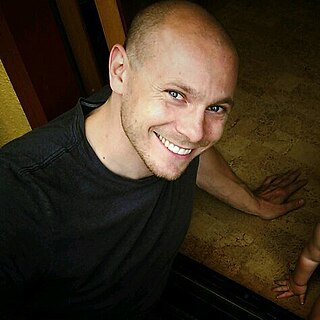
Harley Cross is an American entrepreneur, film/television actor and producer.
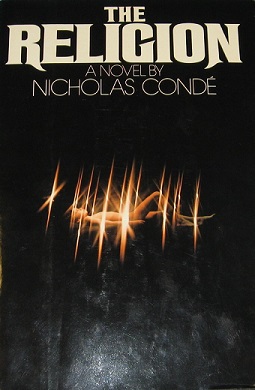
The Religion is a horror novel written in 1982 by Nicholas Conde. It explores the ritual sacrifice of children to appease the pantheon of voodoo deities, through the currently used practice of Santería. The novel depicts the various deities and personas commonly seen in Santería, and it attempts to explain the connection and differences between Santería(white magic)and Brujeria. In essence, the novel shows that there is a difference between Santeria and Brujeria, in which Brujeria is the evil force in the novel, where as Santeria is a force for good.

Santería, also known as Regla de Ocha, Regla Lucumí, or Lucumí, is an Afro-Caribbean religion that developed in Cuba during the late 19th century. It arose amid a process of syncretism between the traditional Yoruba religion of West Africa, Catholicism, and Spiritism. There is no central authority in control of Santería and much diversity exists among practitioners, who are known as creyentes ("believers").

Children of the Corn is a 1984 American supernatural horror film based on Stephen King's 1977 short story of the same name. Directed by Fritz Kiersch, the film's cast consists of Peter Horton, Linda Hamilton, John Franklin, Courtney Gains, Robby Kiger, Anne Marie McEvoy, Julie Maddalena, and R. G. Armstrong. Set in the fictitious rural town of Gatlin, Nebraska, the film tells the story of a malevolent entity referred to as "He Who Walks Behind the Rows" which entices the town's children to ritually murder all the town's adults, as well as a couple driving across the country, to ensure a successful corn harvest.

Land of the Minotaur is a 1976 horror film directed by Kostas Karagiannis and written by Arthur Rowe. Land of the Minotaur is the name of the shorter US cut of the film. When seen as The Devil's Men, it is the full 94-minute European cut.
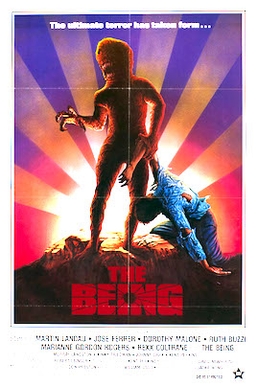
The Being is a 1983 American horror film written and directed by Jackie Kong in her directorial debut, starring Martin Landau, José Ferrer, Dorothy Malone, comedian Ruth Buzzi, Marianne Gordon, and exploitation film producer Bill Osco, who is billed as "Rexx Coltrane" in the opening credits and "Johnny Commander" in the closing credits.
Lee Richardson was an American character actor who frequently appeared in Sidney Lumet's films.
Little Men is a 1998 Canadian family drama film starring Mariel Hemingway and Chris Sarandon. It is based on the 1871 novel of the same name written by Louisa May Alcott, the author of Little Women. It is a loose sequel to Little Women (1994).
















